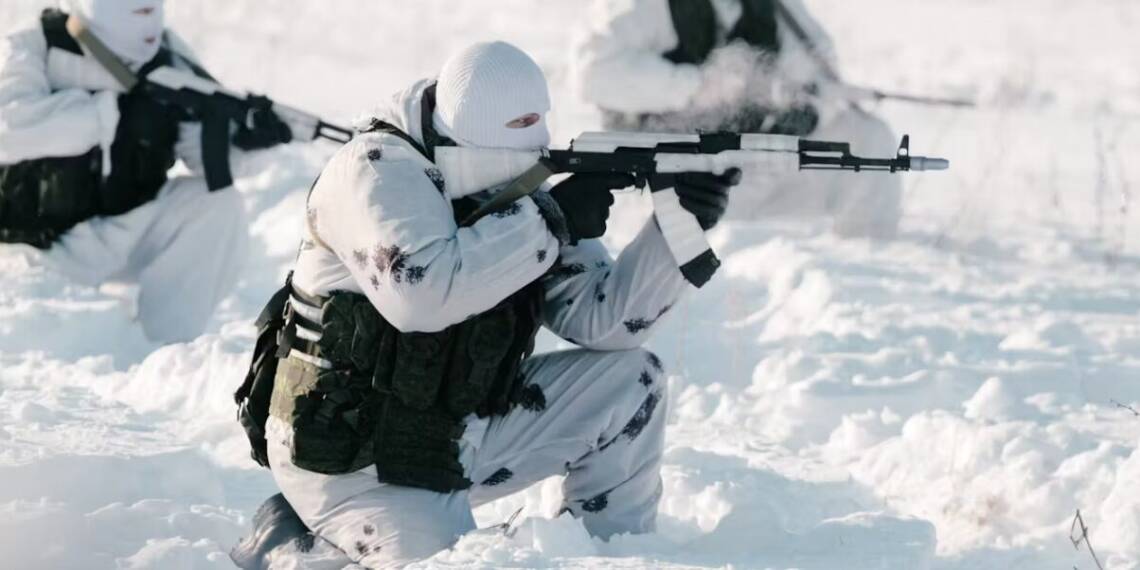In a significant development, the pilots of Russia’s Northern Fleet’s Mixed Air Corps have achieved remarkable records in the Arctic. These achievements were brought to light following a Military Council meeting led by corps commander Lieutenant General Alexander Otroshchenko, leading to their official recognition and inclusion in the prestigious Book of Records of the Armed Forces of the Russian Federation.
These achievements mark a significant enhancement in Russia’s strategic presence and capabilities in the Arctic. Noteworthy was the Su-33 naval fighter aircraft’s inaugural flight to Arctic Ocean airfields, demonstrating operational viability and the potential for defending Russian Armed Forces’ facilities, including the crucial Northern Sea Route. Additionally, Su-33 crews initiated combat duty from Rogachevo and Nagurskaya airfields, showcasing the aircraft’s reliability and pilot proficiency under the Arctic’s demanding conditions.
For these outstanding feats, the Northern Fleet’s fighter aviation regiment commander received a certificate for inclusion in the Armed Forces of the Russian Federation’s Book of Records, celebrating both technical success and the Arctic’s strategic importance to Russia.
Furthermore, a recent Military Council meeting emphasized not just these accomplishments but also the critical need for maintaining aviation units’ combat readiness. This focus underscores the Arctic’s strategic value to Russia and its commitment to bolstering military capabilities in this crucial area.
As the Arctic experiences transformative changes due to the receding ice cap, revealing new sea lanes and resources, Russia is keen on establishing itself as a dominant force in this increasingly strategic and contested domain. In recent years, Russia has significantly expanded its military presence in the Arctic. It now operates a comprehensive network of military bases that exceeds the total operated by the United States and NATO combined. Since 2005, efforts have been underway to refurbish and modernize Soviet-era military installations across the Arctic, as detailed by Reuters.
This ambitious modernization includes upgrading the Russian navy and developing advanced hypersonic missiles, affirming Russia’s position as a formidable power. These advancements enable Russia to challenge US sensors and defense mechanisms effectively.
In a strategic move to further augment its Arctic capabilities, Moscow has recently decided to deploy specialized Railway Troops under the Northern Fleet’s command. This decision underscores Russia’s commitment to bolstering its military infrastructure and readiness in the Arctic, ensuring its continued influence and operational superiority in this critical region.
Russia’s strategic initiative to deploy specialized Railway Troops under the Northern Fleet aims to significantly boost the mobilization capabilities of weaponry, troops, and logistical support across the Arctic’s challenging terrain. This move is a part of Russia’s broader effort to enhance its operational readiness in the region, amidst growing concerns over NATO’s expansion, highlighted by Finland’s recent accession and Sweden’s ongoing endeavors to join the alliance. The Kremlin views the fortification of its Arctic infrastructure as a proactive measure against perceived Western encroachments.
In 2023, Russia announced a strategic partnership with China to develop infrastructure along the Northern Sea Route, a crucial Arctic shipping lane, marking a significant convergence of economic interests between Moscow and Beijing in the polar region. However, experts point out the West’s military presence in the Arctic significantly lags behind Russia’s, by approximately a decade. The RAND Corporation, an American think tank, cited the scarcity of assets and infrastructure available for operations in the Arctic as a major challenge for the US military, in stark contrast to Russia’s extensive resources.
Russia’s dominance in the Arctic is further underscored by its substantial fleet of over 50 polar icebreakers, significantly outnumbering the US fleet, which consists of only two, though plans for expansion are in the works. Meanwhile, Canada, aiming to safeguard its Arctic coastline, is considering the acquisition of nuclear submarines. Prime Minister Justin Trudeau has expressed intentions to explore modern submarine options to enhance Canada’s Arctic defense capabilities. Furthermore, Trudeau confirmed Canada’s plans to join the AUKUS military alliance, a trilateral security partnership formed in 2021 by the US, the UK, and Australia, focused on the Indo-Pacific region, to strengthen security and defense cooperation.








